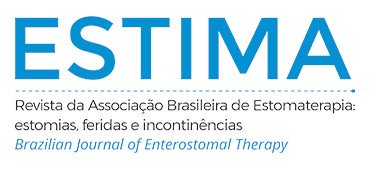TECHNOLOGIES FOR HEALTH EDUCATION IN THE CARE OF PATIENTS WITH URINARY INCONTINENCE: AN INTEGRATIVE REVIEW
Abstract
Objective: analyze the technologies available in the literature used for health education in the care of people with urinary incontinence. Methods: integrative review, with database searches: Índice Bibliográfico Espanhol de Ciências da Saúde (IBECS), Base de Dados em Enfermagem (BDENF) via Biblioteca Virtual em Saúde (BVS), Medical Literature Analysis and Retrieval System Online via Pubmed (MEDLINE/PubMed) from the National Library of Medicine, Cumulative Index to Nursing and Allied Health Literature (CINAHL), Scopus, Web of Science and Embase. The collection was carried out in February 2021, with the main descriptors: Urinary Incontinence, Educational Technology and Health Education. Results: 91 articles were selected, after analyzing the inclusion and exclusion criteria, there were only 5 productions that were selected, presenting as a strategy the technologies: multimedia course, videos, mobile application and book/booklet. The articles were published between 1997 and 2020. The dimensions considered were: development of health technologies for the treatment of urinary incontinence and knowledge, adherence and the effect of using health technologies for the treatment of urinary incontinence. Conclusion: the technologies used were diversified, with the adherence and the effect being directly proportional, and it depends on how the individual understands urinary incontinence and the impact it brings on each person’s life.
Downloads
Metrics
References
Brasil DMM, Nicolau AIO, Bilhar APM, Karbage SAL, Lucena SV, Carmo TF et al. Urinary incontinence and female sexual function: an integrative review of validated questionnaires. Acta Paul Enferm. 2018;31(5):558-63. http://doi.org/10.1590/1982-0194201800077
Abrams P, Andersson KE, Apostolidis A, Birder L, Bliss D, Brubaker L et al. 6th International Consultation on Incontinence. Recommendations of the International Scientific Committee: EVALUATION AND TREATMENT OF URINARY INCONTINENCE, PELVIC ORGAN PROLAPSE AND FAECAL INCONTINENCE. Neurourol Urodyn. 2018;37(7):2271-2. http://doi.org/10.1002/nau.23551
Mourão LF, Luz MHBA, Marques ADB, Benício CDAV, Nunes BMVT, Pereira AFM. Characterization and Risk Factors of Urinary Incontinence in Women Cared in a Gynecological Clinic. ESTIMA, Braz. J. Enterostomal Ther. 2017;15(2):82-91. http://doi.org/10.5327/Z1806-3144201700020004
Valença MP, Albuquerque AFLL, Rocha GMS, Aguiar APD. Nursing Care in Urinary Incontinence: a Study of Integrative Review. ESTIMA, Braz. J. Enterostomal Ther. 2016;14(1):43-9. http://doi.org/10.5327/Z1806-3144201600010007
Oliveira TDA. Prevalence of urinary incontinence complaints in users of a primary care service in the city of Fortaleza (CE) [dissertação]. Fortaleza (CE): Faculdade de Farmácia, Odontologia e Enfermagem, Universidade Federal do Ceará; 2017.
Bezerra KC, Vasconcelos Neto JA, Bezerra LRPS, Karbage SAL, Frota IPR, Vasconcelos CTM et al. Health promotion to patients with pelvic floor dysfunction: an integrative review. Open J Obstet Gynecol. 2015;5(1):155-62. http://doi.org/10.4236/ojog.2015.53021
Ministério da Saúde (BR). Secretaria de Ciência, Tecnologia e Insumos Estratégicos. Departamento de Ciência e Tecnologia. Política Nacional de Gestão de Tecnologias em Saúde; 2010. Available at: http://bvsms.saude.gov.br/bvs/publicacoes/politica_nacional_gestao_tecnologias_saude.pdf
Mendes KDS, Silveira RCCP, Galvão CM. Use of the bibliographic reference manager in the selection of primary studies in integrative reviews. Texto contexto-enferm. 2019;28:e20170204. http://doi.org/10.1590/1980-265x-tce-2017-0204
Tufanaru C. Systematic reviews of effectiveness. In: Aromataris E, Munn Z (Editors). Joanna Briggs Institute Reviewer’s Manual. The Joanna Briggs Institute; 2017. Cap 3. Available at: https://reviewersmanual.joannabriggs.org
Oxford Centre for Evidence-based Medicine. 2009 [acesso em 20 jun 2020]. Available at: http://conitec.gov.br/images/Artigos_Publicacoes/Oxford-Centre-for-Evidence-Based-Medicine.pdf
Niewijk AH, Weijts WBM. Effects of a multi-media course on urinary incontinence. Patient Educ Couns. 197;30(1):95-103. http://doi.org/10.1016/s0738-3991(96)00961-5
Franzén K, Johansson J-E, Andersson G, Nilsson K. Urinary incontinence: Evaluation of an information campaign directed towards the general public. Scand J Urol Nephrol. 2008;42(6):534-8. http://doi.org/10.1080/00365590802229962
Seshan V, Muliira JK. Effect of a Video-Assisted Teaching Program for Kegel’s Exercises on Women’s Knowledge About Urinary Incontinence. J Wound Ostomy Continence Nurs. 2015;42(5):531-8. http://doi.org/10.1097/WON.0000000000000127
Saboia DM, Vasconcelos CTM, Oriá MOB, Bezerra KC, Vasconcelos Neto JA, Lopes MHBM. Continence App: Construction and validation of a mobile application for postnatal urinary incontinence prevention. Eur J Obstet Gynecol Reprod Biol. 2019;240:330-5. http://doi.org/10.1016/j.ejogrb.2019.07.026
Davis NJ, Clark PC, Johnson II TM, Wyman JF. Feasibility of Tele-Prompt: A tablet-based prompted voiding intervention to support informal caregivers of older adults with urinary incontinence. Geriatr Nurs. 2020;41(4):411-20. http://doi.org/10.1016/j.gerinurse.2020.01.002
Filatro A, Cairo S. Produção de conteúdos educacionais . São Paulo: Saraiva; 2015.
Santos ZMSA, Frota MA, Martins ABT. Tecnologias em saúde: da abordagem teórica a construção e aplicação no cenário do cuidado. Fortaleza: EdUECE [Internet]; 2016. Available at: http://www.uece.br/eduece/dmdocuments/Ebook%20-%20Tecnologia%20em%20Saude%20-%20EBOOK.pdf
Loohuis AMM, Wessels NJ, Jellema P, Vermeulen KM, Hove MCS, Gemert-Pijnen JEWC et al. The impact of a mobile applicationbased treatment for urinary incontinence in adult women: Design of a mixed-methods randomized controlled trial in a primary care setting. Neurourol Urodyn. 2018;37(7):2167-76. http://doi.org/10.1002/nau.23507
Gusmão JL, Mion Jr. D. Adesão ao tratamento – conceitos. Rev Bras Hipertens. 2006; [acesso em 21 out 2020]; 13(1):23-25. Available at: http://departamentos.cardiol.br/dha/revista/13-1/06-adesao-ao-tratamento.pdf
Downloads
Published
Versions
- 2021-12-09 (2)
- 2021-12-07 (1)
How to Cite
Issue
Section
License
Copyright (c) 2021 Francisca das Chagas Sheyla Almeida Gomes Braga, Andrea Pinto da Costa, Nisleide Vanessa Pereira das Neves, Grazielle Roberta Freitas da Silva, Ana Roberta Vilarouca da Silva, Herla Maria Furtado Jorge

This work is licensed under a Creative Commons Attribution 4.0 International License.

























